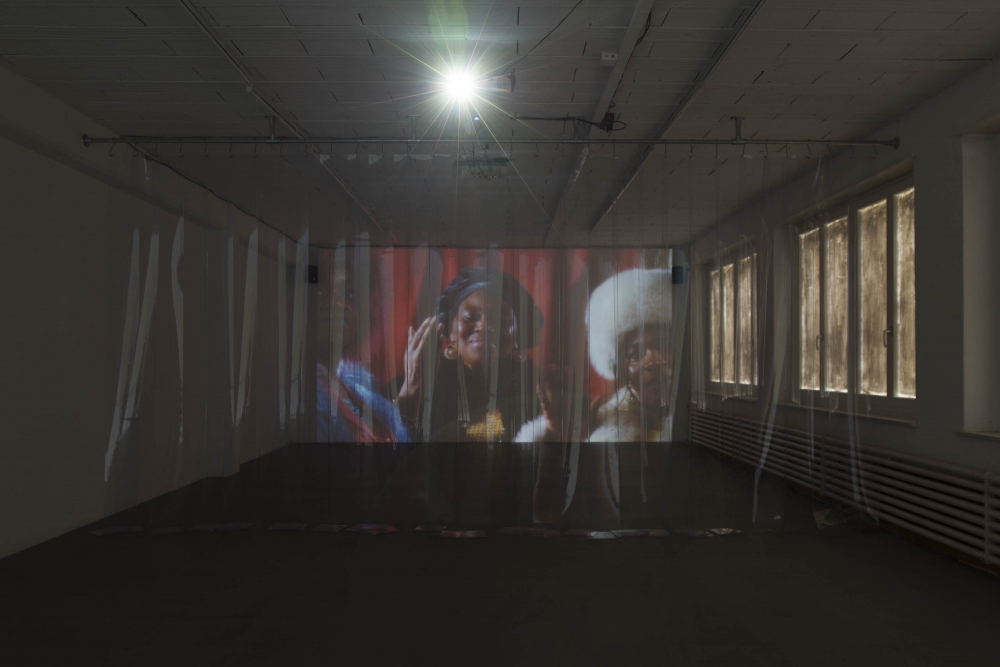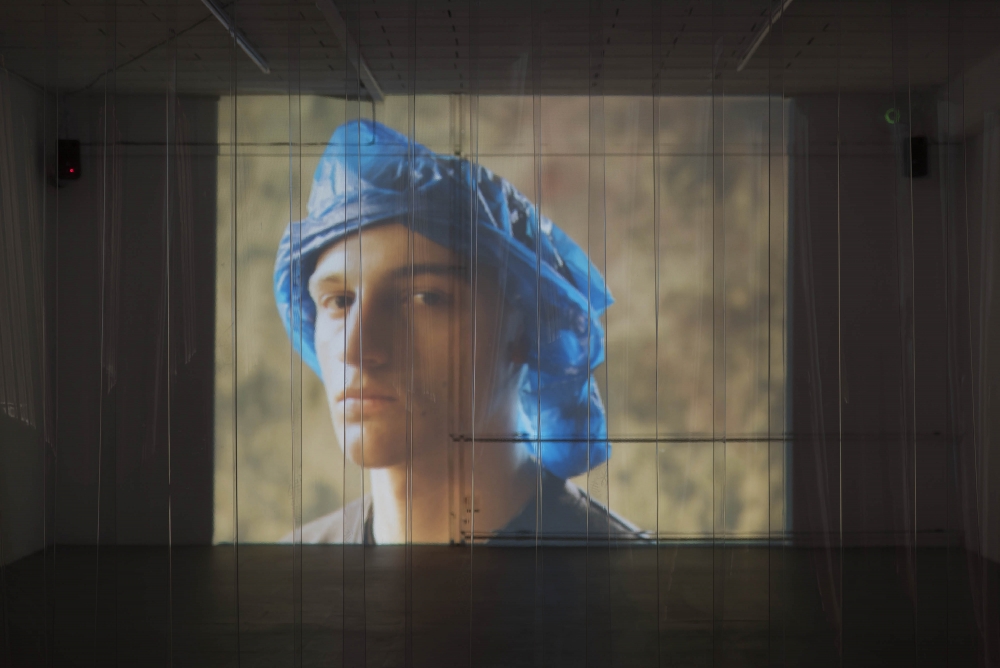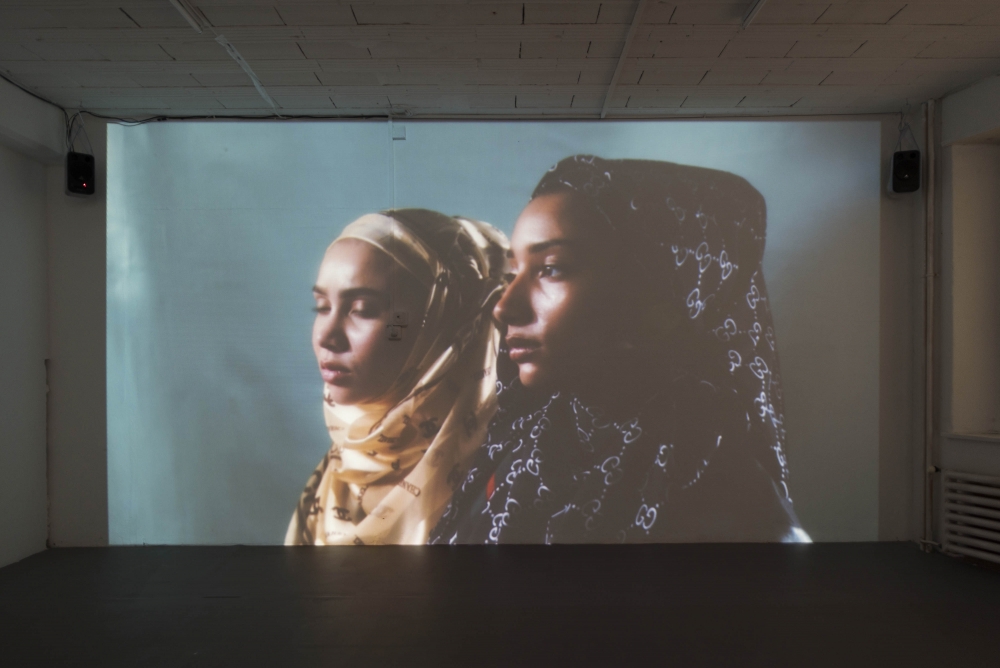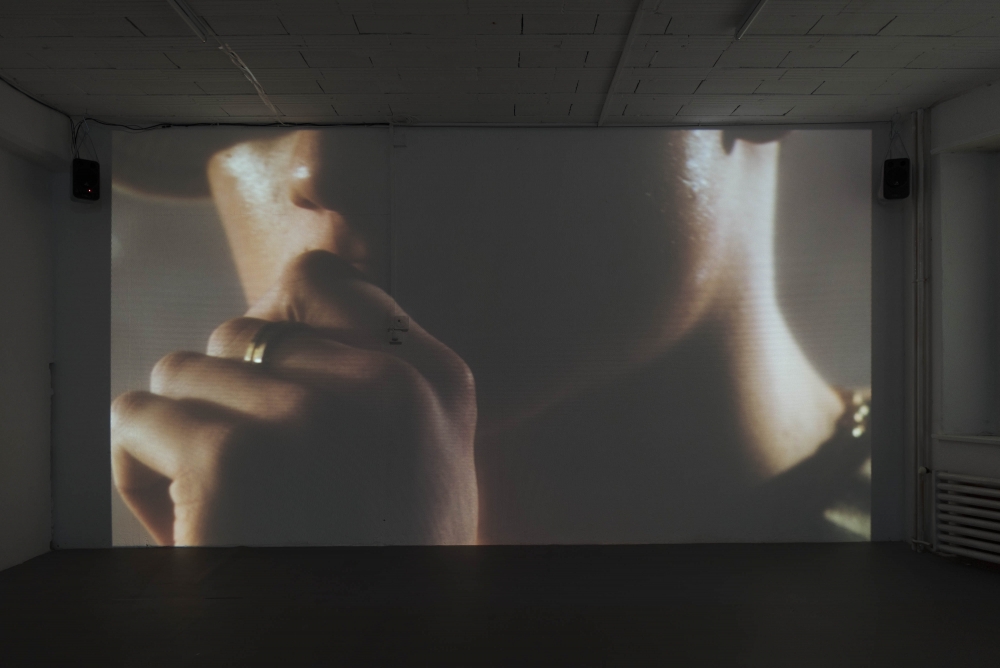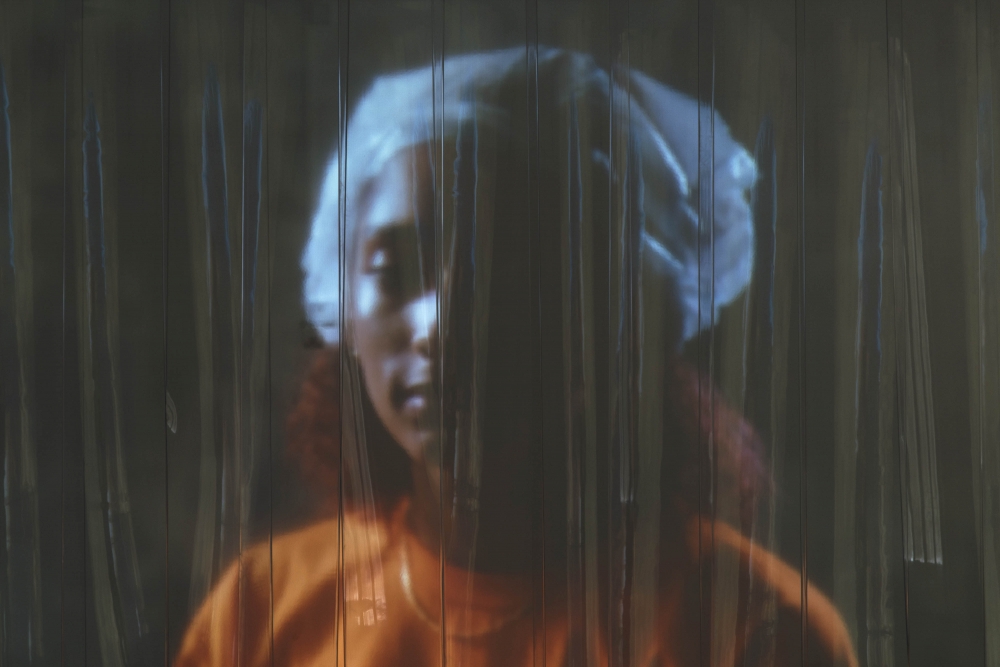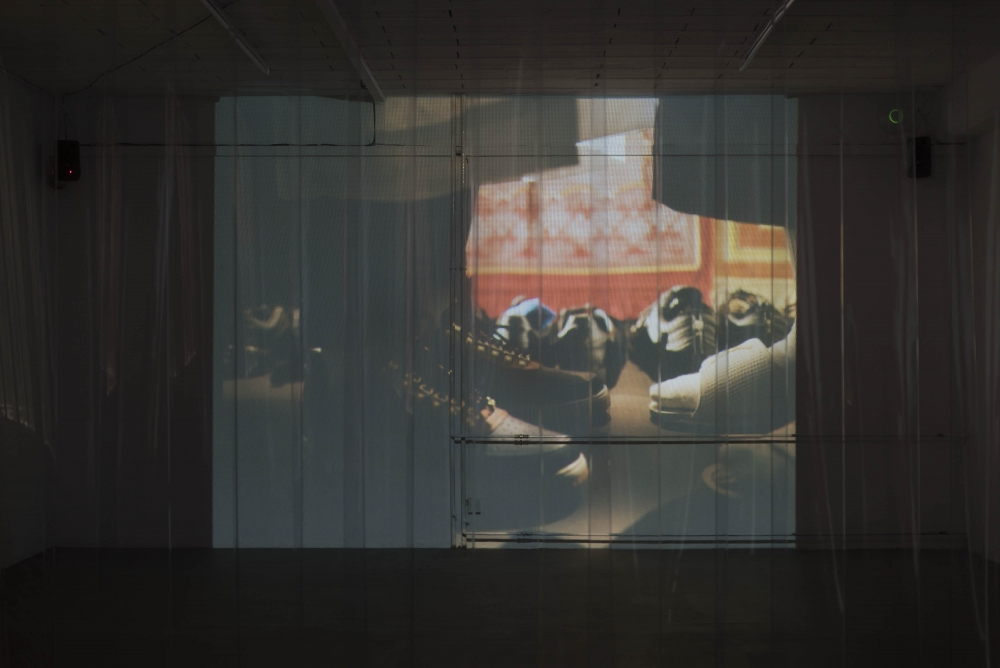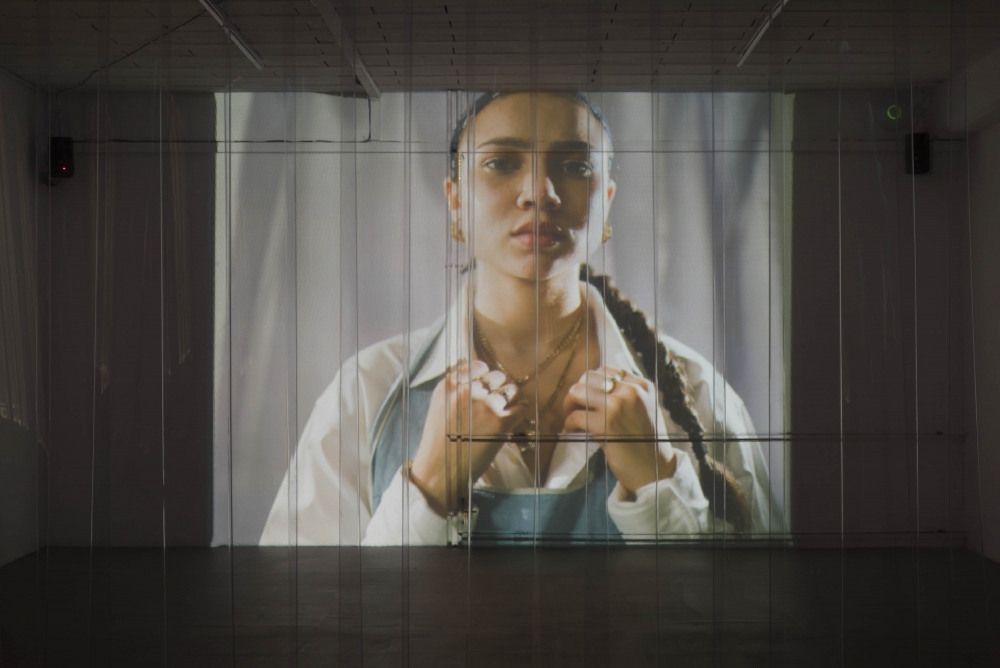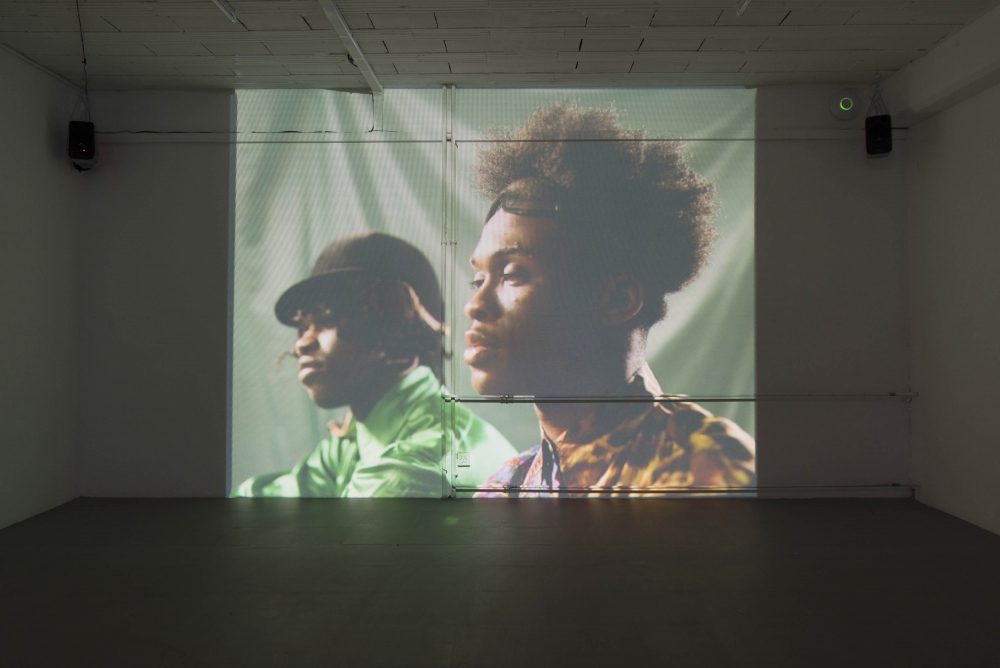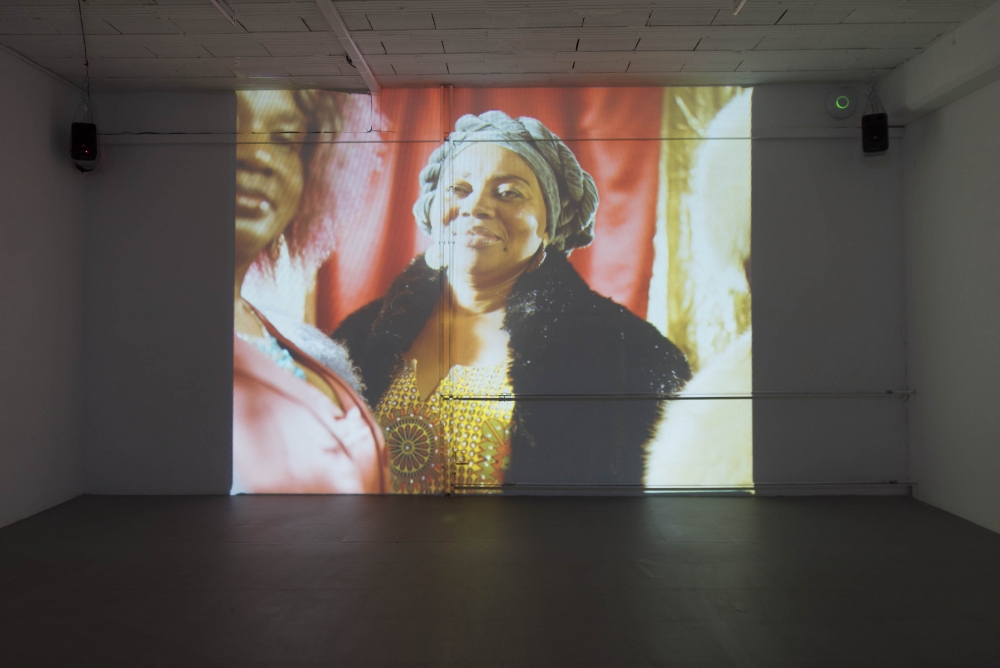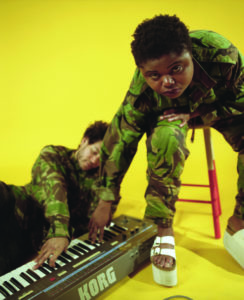“I think there is a sense of urgency” says moving image director Akinola Davies Jr (aka Crack Stevens) when I ask him about his interest in documenting the collective identity of his community, “being a member of [the African diaspora in London] makes you somewhat of an alien. You straddle two lives. One of tradition and one that’s trying to assimilate into a new world. I’m interested in what happens when they collide.”
Davies, who is currently presenting his first solo exhibition Boot/Leg at Basel’s 1. 1 gallery running from March 17 to 31, has collaborated on music videos with artists familiar to AQNB such as Klein, Larry B and FARAI. He also recently teamed up with designer Bianca Saunders for her 2017 ‘Personal Politics’ collection where they produced a film that challenged preconceptions of Black masculinity and ‘identifying situations where working together in a tactile environment and supporting each other is allowed.’
Davies also co-hosted the topical discussion show on NTS radio, ’I Know Nothing’ with Stephanie Hegarty that later became ‘Talking Mens Club’ on wide-ranging issues such as consent, immigration and mental health. And as a political activist, initiated the successful Nigerian Lives Matter campaign to bring awareness to the Boko Haram massacre in the north-eastern town of Baga in 2015.
Boot/Leg at 1. 1 consists of an installation of two new videos directed by Davies; ‘Boot/Leg 1’ and ‘Boot/Leg 2’ with scores written by Timothy DeWit and Coby Sey respectively. The title of the show refers to the counterfeit designer goods – belts, handbags, sunglasses, t-shirts, perfumes etc. – available in local markets or online for those who cannot afford, or perhaps simply don’t want to pay for, the inflated cost of the ‘real thing’.
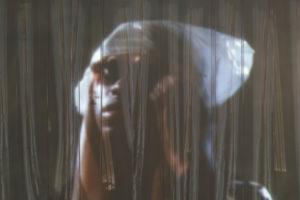
Continuing on from his interest in collective identity as presented through the language of portraiture and examining the markers of success, Boot/Leg shifts attention to the power dynamic that exists between the luxury brands who establish status symbols and the unintended communities from lower socio-economic backgrounds who adopt them. He looks to acknowledge the two-way transformative process that takes place: on one hand, through an objectification the wearer looks to draw an affiliation with a particular social standing and assimilate the brands into their own cultural language and on the other, even if the goods are fake and therefore the brand does not directly benefit from the cash sales, it still gains a previously unheld legitimacy, that is, street-cred through the embodied cultural capital of the wearer.
For Boot/Leg, Davies employs the tropes of glossy high-end fashion shoots presenting isolated models framed by a contrasted light with products front and centre. He sets the subject apart in order to question the levels of ownership and authenticity in culture “between the economically disenfranchised and the economically empowered, when each wears the same product as an outward expression of their identity”.
In a short Q+A, Davies speaks with us about some recent collaborations and the influences behind his most recent work.
** What’s your background to date, how did you come to be a film director?
Akinola Davies Jr: How do I make this sound more interesting than it is. I wanted to be a journalist, studied at Brighton. Realised very quickly the type of journalism i wanted to do wasn’t best served writing copy. Whilst doing this i hung out with kids at the art school. They were quirky and eccentric and I wanted some of that. I used to hangout at the library and found a CD of a couple of friends who had graduated. Anna Lomax and Lauren Davies. I watched it and it ended up being the best thing I had seen. I tried to work for production companies in London, wasn’t very good at making tea, knew I wanted to be a creative so I saved up and enrolled in a film making workshop in NYC. You got one of those diplomas after you completed it, everyone got one to be fair. I moved back to London and met Tim & Barry. They asked me to come in once a week, I went in everyday and eventually I was, shooting, editing, producing in a very unconventional way. I loved every minute of it, I worked a lot for free on any set or assisting job I could to get experience. I still do (assist) to be honest.
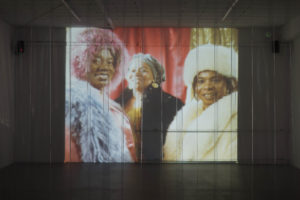
** I read that you’ve been working with Tim & Barry at Just Jam for a while as a programmer and scout, is that right?
ADJ: Yeah so I met T&B within a few months of being back in London, I knew pretty much everything they had done. They were taking my picture for this soul II soul lookbook. Because I had this funky haircut. I basically geeked out on them and begged for a job. They had just started a show called Just Jam and needed help, so I would meet them at the Alibi (where it was first shot) and just handle the production stuff. I always knew there was stuff on set no-one wanted to do. That’s what I would do, because it gets you noticed and also endears you to people. Before you know it I was operating the camera, editing, producing and eventually I helped curate the line ups.
** Through much of your work you present communities of people, in particular those from the African diaspora (in London). How conscious a decision is it to work with groups like this and what are your interests in examining a collective identity?
ADJ: I’m fascinated by people, their histories and how they work, exist together. So documenting my community is a no brainer. I guess the way I see it, being a member of diaspora makes you somewhat of an alien. You straddle 2 lives. One of tradition and one that’s trying to assimilate into a new world. What happens when they collide? I read a Kerry James Marshall quote about how he is unapologetic for painting such big canvases with black people. He said something like there is sense of urgency to fill these big galleries with images like this. I think there is a sense of urgency to document the diaspora. Similarly traditions are dying or evolving, people are living these coded lifestyles. Switching effortlessly than previous generations. I think thats mad. Society is enriched when these cultures come together and intermingle respectfully and celebrate with each other.
** Our readers will be familiar with your direction on Klein’s video for ‘Marks of Worship’ and FARAI’s video for ‘Lion Warrior’. Your use of portraiture in these videos reminds me of the work of high-street photographers such as Harry Jacobs studio in Brixton – those people who would chronicle communities and their big moments over decades, with the pictures then sent to extended families and presented in living rooms, in wallets etc. Can you talk us through the filming of these two projects and what influences you looked to?
ADJ: Had to google Harry Jacob, so I don’t sound unintelligent lol. I think people take pride in their appearance and in particular African people don’t play around when it comes to formal occasions. They make sure if any days of the year the look great it’s for these event. Whilst these events happen they want it documented, so boom. The tropes of these types of images, the composition, the poses, the backdrops, are all very familiar to Africans on a whole. We want to show you our best sides, we want to send this images out to our families to let them know we are well. We are making them proud, that we are optimistic about where we are going etc. I think these images, although a moment, carry so much. In regards to Marks of worship, that was me identifying being alien within your own community. It was me, exorcising of the anxieties of my upbringing, religion, wealth and aspiration, loneliness, pageantry, community, desire and humor. For lion Warrior it was pride, anger, vulnerability, industriousness, controlling narratives, the link between past present and other communities. I mean there are a million ideas in my mind based on the nurture of whatever I receive intuitively from who or what I’m working on.
** Can you tell us about the film you made with designer Bianca Saunders for her show ‘Permission’ – how it came about and how you approached the challenge to preconceived notions of Black masculinity?
ADJ: Ah yes, that was one of my personal favourites, permission. I used to have a radio show on NTS radio, themed on topics which I wanted to know more about. The show was called “I know nothing” and then later “talking mens club”. It was about breaking things down, presenting difficult conversations and displaying an array of opinions and coping mechanisms. Bianca listened to one show, I might be wrong about this but I think it might have been behind her whole collection of some of the thought processes with in. She approached me based on the show and what she had seen of my work. Up till that point I hadn’t worked with men as the main protagonist in anything I’d shot. There was also a lot of stuff out there which was all very performative “Black masculinity” pieces. Bianca knew she didn’t want anything performative, she is very thorough with her research and my radio show being the source of some of that meant we pretty much knew what we wanted to do. I settled on permission because of lack of perceived intimacy and indifference of proximity between Black male silhouette. Our gender is boiled down to sex, which makes any of those actions seems unnatural when actually they are most natural. So i settled on trust falls and mosh-pits, and the energy of men within them, especially the later. Mosh-pits especially seemed to be the most macho setting to be in, yet it’s all a bunch of people submitting to being in close physical proximity and performing an exhilarating activity. I think the key to collaboration is doing your homework. Finding people you like, setting the framework and then leaving everyone to do what they do without interference
** Can you introduce your current show, ‘Boot/Leg’ at Basel’s 1.1 gallery, what led to your interest in brands? Did you choose specific brands to feature?
ADJ: Yes sure, Boot/Leg is about that very code I spoke about earlier. When worlds collide. This time in the context of fashion/popular culture. It was seeing women on Kingsland road in Chanel Hijabs, or rudeboys with luxury purses or our social common denominator the blue plastic bag. Which exist everywhere so long as you have a corner shop. Boot/Leg is an attempt at the conversation using the tropes of a high end shoot. Most of the communities that adopt these codes are often not who these products are aimed at. You know what would happen in Chanel for example did a shoot with women in hijabs or Armani did a shoot with rudeboys and purses. Communities create culture, they immortalise aesthetics, make the mundane commodity a staple within the framework of their existence and then the broader existence. Who owns this? Where do these clashes co-exist. Once again it’s from an observational interest in human behaviour and identity. The room is designed to reflect all these thoughts. Don’t get me wrong I had no idea what I was doing in terms of presenting in an art context but this is where that space, that body of work, drove me. Added to that the installation process with my producer Moya Deyoung, Joseph Bond studio and 1.1 was also very formative in terms of community and what this show has come to represent.

** What is it that happens when luxury brands are adopted into working class communities?
ADJ: Similar to the last question, they are immortalised, they take on a personality, coded if you have a wealthy understanding of culture. They become part of the family, either within a specific aesthetic within a culture and then the broader sense of it. Especially because when these items are mind there is a very specific consumer in mind, in the ad campaigns, in the pricing in where you go to get these things. So working class communities make their own version or get a version close to the original or they dave up all their money and buy the original and become like strict and devoted to whatever it is. I mean there is layers.
** What have you got coming up in the next while?
ADJ: Oh man, I have a very short film with the V&A, finally releasing a film I made for the fantastic people over at SUNU journal. More film, I think any context of making film for me is magic. I’m writing a bunch of brilliantly weird scripts, making longer form stuff is key for me which means I need to figure out funding but yeah I’m really excited on any project. Whether I’m the lead a member of the team.**
